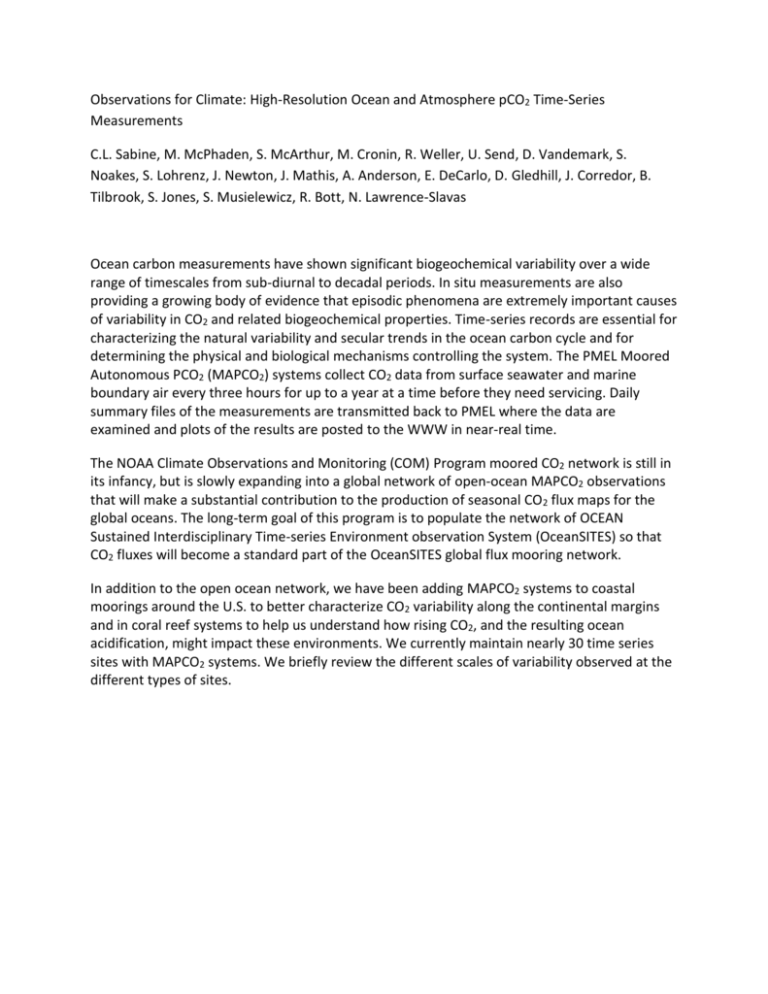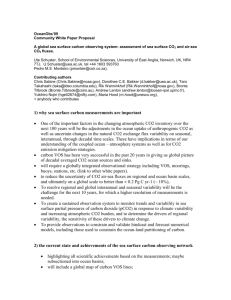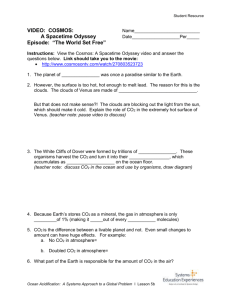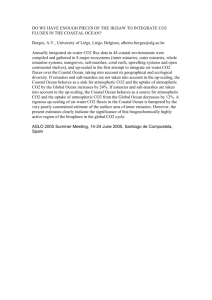Observations for Climate: High-Resolution Ocean and Atmosphere
advertisement

Observations for Climate: High-Resolution Ocean and Atmosphere pCO2 Time-Series Measurements C.L. Sabine, M. McPhaden, S. McArthur, M. Cronin, R. Weller, U. Send, D. Vandemark, S. Noakes, S. Lohrenz, J. Newton, J. Mathis, A. Anderson, E. DeCarlo, D. Gledhill, J. Corredor, B. Tilbrook, S. Jones, S. Musielewicz, R. Bott, N. Lawrence-Slavas Ocean carbon measurements have shown significant biogeochemical variability over a wide range of timescales from sub-diurnal to decadal periods. In situ measurements are also providing a growing body of evidence that episodic phenomena are extremely important causes of variability in CO2 and related biogeochemical properties. Time-series records are essential for characterizing the natural variability and secular trends in the ocean carbon cycle and for determining the physical and biological mechanisms controlling the system. The PMEL Moored Autonomous PCO2 (MAPCO2) systems collect CO2 data from surface seawater and marine boundary air every three hours for up to a year at a time before they need servicing. Daily summary files of the measurements are transmitted back to PMEL where the data are examined and plots of the results are posted to the WWW in near-real time. The NOAA Climate Observations and Monitoring (COM) Program moored CO2 network is still in its infancy, but is slowly expanding into a global network of open-ocean MAPCO2 observations that will make a substantial contribution to the production of seasonal CO2 flux maps for the global oceans. The long-term goal of this program is to populate the network of OCEAN Sustained Interdisciplinary Time-series Environment observation System (OceanSITES) so that CO2 fluxes will become a standard part of the OceanSITES global flux mooring network. In addition to the open ocean network, we have been adding MAPCO2 systems to coastal moorings around the U.S. to better characterize CO2 variability along the continental margins and in coral reef systems to help us understand how rising CO2, and the resulting ocean acidification, might impact these environments. We currently maintain nearly 30 time series sites with MAPCO2 systems. We briefly review the different scales of variability observed at the different types of sites.











